|
Glück Auf / Coal Baron
Authors: Wolfgang Kramer & Michael Kiesling
Publisher: Pegasus Spiele
Year: 2013
review by

| x |
|
|
|
|
|
|
|
|
|
|
|
|
|
|
|
|
|
|
|
|
|
|
|
|
|
|
|
|
|
|
|
|
|
|
|
|
|
|
|
|
|
|
|
|
|
|
|
|
|
|
|
|
|
|
|
|
|
|
|
|
|
|
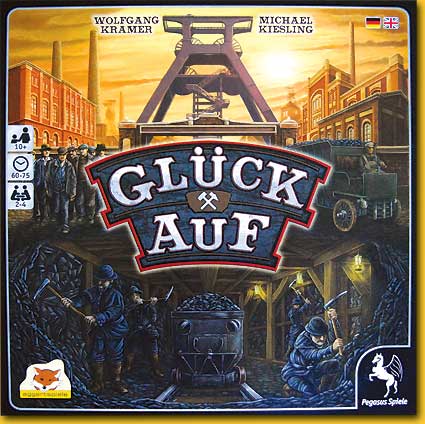 |
Essen is not only indispensable as the hosting city of the annual convention Spiel!: already in the 19th century the city was very important for the economy, as a result of its coal supply. The mine has been operational from 1834 to 1986, and partly because of the automated mining process it was one of the most productive coal mining grounds in Germany. At its peak, the daily production was around 10.000 ton! The labour was not very healthy, it included breathing a lot of dust, carrying heavy loads, and dealing with high temperatures at extremely high humidity. In addition to unhealthy it was also very dangerous. This is reflected in the miners greeting ‘Glück Auf’, which can be translated as ‘good luck’, but its literal translation comes closer to ‘I hope you reach the surface safely’. This surely implies some worries form the greeting party. |
|
|
|
|
|
| x |
|
|
|
|
|
|
|
|
|
|
|
|
|
|
|
|
|
|
|
|
|
|
|
|
|
|
|
|
|
|
|
|
|
|
|
|
|
|
|
|
|
|
|
|
|
|
|
|
|
|
|
|
|
|
|
|
|
|
|
|
|
|
|
But that is none of our concern in the game. The players each exploit a mine and a group of employees, and they try to mine as much coal as possible. Subsequently they attempt to reel in orders, and transport and sell the coal, which results in victory points. The player with the highest total after three rounds wins the game.
|
|
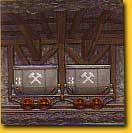 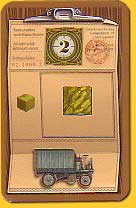 |
|
|
|
|
|
| xx |
|
|
|
|
|
|
|
|
|
|
|
|
|
|
|
|
|
|
|
|
|
|
|
|
|
|
|
|
|
|
|
|
|
|
|
|
|
|
|
|
|
|
|
|
|
|
|
|
|
|
|
|
|
|
|
|
|
|
|
|
|
|
| The mines are divided by a shaft into a dark and a light side; both sides have four levels where respectively, yellow, brown, grey and black coal can be mined. The deeper the coal, the more expensive to get it above ground, and the more victory points it scores. |
|
|
|
|
|
| x |
|
|
|
|
|
|
|
|
|
|
|
|
|
|
|
|
|
|
|
|
|
|
|
|
|
|
|
|
|
|
|
|
|
|
|
|
|
|
|
|
|
|
|
|
|
|
|
|
|
|
|
|
|
|
|
|
|
|
|
|
|
|
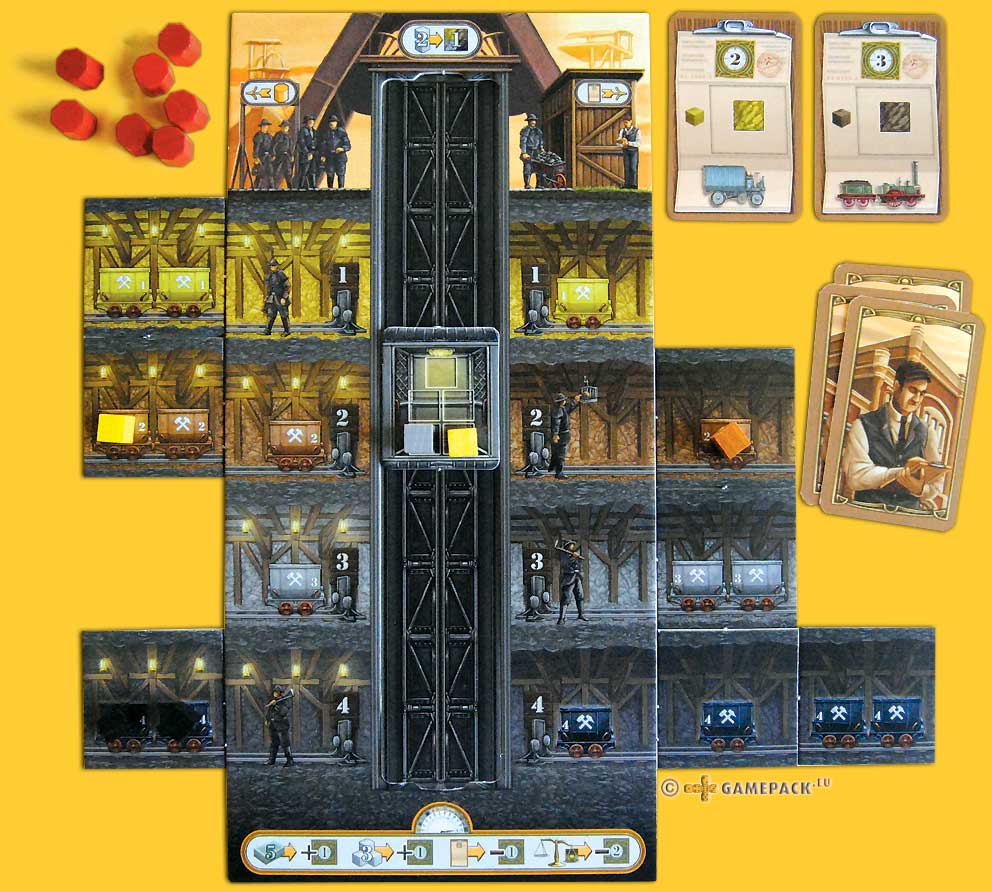 |
|
|
|
| x |
|
|
|
|
|
|
|
|
|
|
|
|
|
|
|
|
|
|
|
|
|
|
|
|
|
|
|
|
|
|
|
|
|
|
|
|
|
|
|
|
|
|
|
|
|
|
|
|
|
|
|
|
|
|
|
|
|
|
|
|
|
|
| On the central board players take turns in selecting and carrying out actions using their workers. The first player to select a specific action uses one worker. Subsequent players are still allowed to choose this action, but they have to pay one worker more than the previous player. There is no limit to the number of times an action can be selected by the same or different players, as long as they have enough workers! |
|
|
|
|
|
| x |
|
|
|
|
|
|
|
|
|
|
|
|
|
|
|
|
|
|
|
|
|
|
|
|
|
|
|
|
|
|
|
|
|
|
|
|
|
|
|
|
|
|
|
|
|
|
|
|
|
|
|
|
|
|
|
|
|
|
|
|
|
|
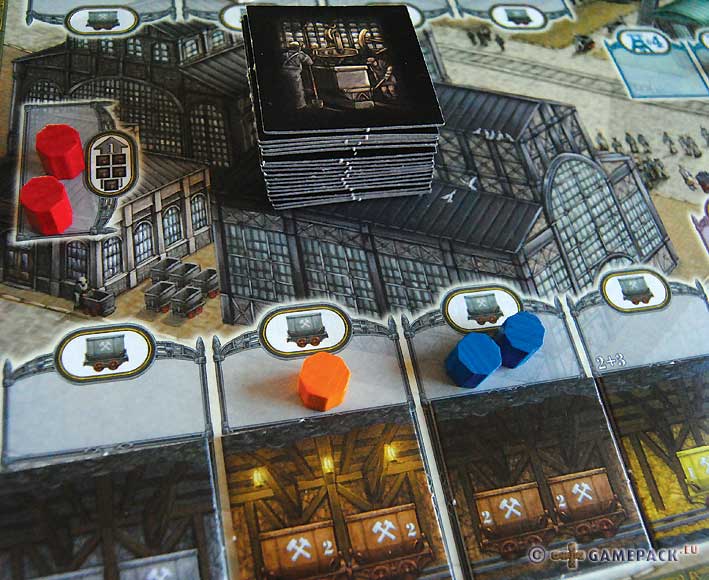 |
|
|
|
| x |
|
|
|
|
|
|
|
|
|
|
|
|
|
|
|
|
|
|
|
|
|
|
|
|
|
|
|
|
|
|
|
|
|
|
|
|
|
|
|
|
|
|
|
|
|
|
|
|
|
|
|
|
|
|
|
|
|
|
|
|
|
|
| One of the possible actions is to purchase a lorry filled with coal of a specific colour. The lorry tiles are available in the four different colours, and with or without lights. A cube of the corresponding colour is placed on the lorry, and the tile is positioned in the mine at the correct level (colour) and side (dark/light). |
|
|
|
|
|
| x |
|
|
|
|
|
|
|
|
|
|
|
|
|
|
|
|
|
|
|
|
|
|
|
|
|
|
|
|
|
|
|
|
|
|
|
|
|
|
|
|
|
|
|
|
|
|
|
|
|
|
|
|
|
|
|
|
|
|
|
|
|
|
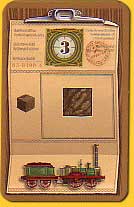 |
Another possible action is to obtain an order. The card depicts how many cubes of which colours of coal are demanded, how many points will be awarded, and what means of transportation has to be used.
To fulfill an order, two other actions are required: first, the coal has to be transported from the mine to the elevator and subsequently loaded onto the order card. Each movement of elevator or cube costs one movement point, and the action is available for 4, 6, 8 or 10 movement points. |
|
|
|
|
|
| x |
|
|
|
|
|
|
|
|
|
|
|
|
|
|
|
|
|
|
|
|
|
|
|
|
|
|
|
|
|
|
|
|
|
|
|
|
|
|
|
|
|
|
|
|
|
|
|
|
|
|
|
|
|
|
|
|
|
|
|
|
|
|
 x x |
Finally the loaded card has to be transported by selecting the desired means of transportation. There is a wheelbarrow, a horse-and-carriage, a truck and a train. A player may fulfil as many orders as he wants with one action, as long as they all have to be transported with the same vehicle. The delivered coal cubes are removed, and the order cards are kept face-down in front of the player. The victory points are awarded immediately. |
|
|
|
|
|
| x |
|
|
|
|
|
|
|
|
|
|
|
|
|
|
|
|
|
|
|
|
|
|
|
|
|
|
|
|
|
|
|
|
|
|
|
|
|
|
|
|
|
|
|
|
|
|
|
|
|
|
|
|
|
|
|
|
|
|
|
|
|
|
| At the end of the first round there is a scoring phase where all players take their fulfilled orders. The player with the most yellow, grey, brown and black cubes receive points, and there are also some points for the second place. After the second round this is repeated, but additionally, points are awarded for the player with the most wheelbarrows, horse-and-carriages, trucks and trains in his stack of fulfilled orders. |
|
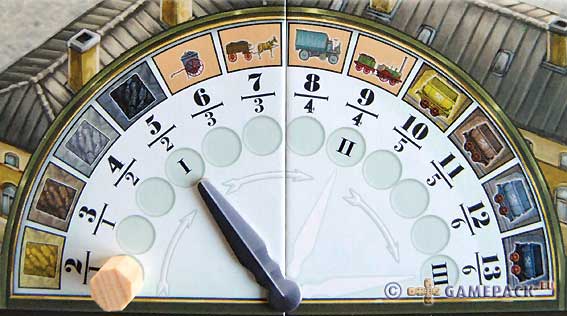 |
|
|
|
|
| x |
|
|
|
|
|
|
|
|
|
|
|
|
|
|
|
|
|
|
|
|
|
|
|
|
|
|
|
|
|
|
|
|
|
|
|
|
|
|
|
|
|
|
|
|
|
|
|
|
|
|
|
|
|
|
|
|
|
|
|
|
|
|
| And after the third and final round, additionally, the players with the most lorries in his mine in each of the four colours will receive points. The player with the highest total wins! |
|
|
|
|
|
| x |
|
|
|
|
|
|
|
|
|
|
|
|
|
|
|
|
|
|
|
|
|
|
|
|
|
|
|
|
|
|
|
|
|
|
|
|
|
|
|
|
|
|
|
|
|
|
|
|
|
|
|
|
|
|
|
|
|
|
|
|
|
|
 |
|
|
|
| x |
|
|
|
| x |
|
|
|
| x |
|
|
|
 |
|
|
|
|
|
|
|
|
|
|
|
|
|
|
|
|
|
|
|
|
|
|
|
|
|
|
|
|
|
|
|
|
|
|
|
|
|
|
|
|
|
|
|
|
|
|
|
|
|
|
|
|
|
| At first, the most important task seems to be to fulfil as many valuable orders as possible in those three rounds. There are some tips and tricks to consider: each movement with the elevator takes one movement point, so it is cheaper to load four cubes from one level than to load four cubes from four different levels. It is also smart to save up some orders before transporting them: it requires one action, whether you transport one order or multiple orders simultaneously. But don’t wait too long either: a round is over before you know it, and there is only three of them! And the fulfilled orders are used to determine the majorities at the end-of-round scoring phase, so you’d better fulfil as many as possible! |
|
|
|
|
|
| x |
|
|
|
|
|
|
|
|
|
|
|
|
|
|
|
|
|
|
|
|
|
|
|
|
|
|
|
|
|
|
|
|
|
|
|
|
|
|
|
|
|
|
|
|
|
|
|
|
|
|
|
|
|
|
|
|
|
|
|
|
|
|
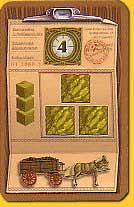 |
Since during these end-of-round scoring phases, points are awarded for majorities in several different areas (colour cubes, modes of transportation, lorries in the mine), it is worthwhile to diversify. So, don’t fish out the black (most valuable) coal lorries and orders. These scoring phases have a profound effect on the game: unless you are blessed with a brilliant memory, you don’t know exactly how many orders with which colours of coal and which modes of transportation the other players possess. As a result, you are trying to obtain a majority in something without really knowing how your opponents are doing. This adds a very random element to the game, and players with a good memory will definitely have the edge. |
|
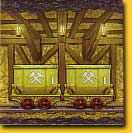 |
|
|
|
|
| x |
|
|
|
|
|
|
|
|
|
|
|
|
|
|
|
|
|
|
|
|
|
|
|
|
|
|
|
|
|
|
|
|
|
|
|
|
|
|
|
|
|
|
|
|
|
|
|
|
|
|
|
|
|
|
|
|
|
|
|
|
|
|
| In a two-player game, only first places are awarded during the scoring phases, so only one of the players receives a lot of points, and the other one none at all. As a result, one of the players tends to take a dramatic lead and the other will never be able to recuperate. A second consequence is that the second player is not rewarded at all for his efforts: whether he has almost as many cards as the number one, or none at all, he scores no points either way! |
|
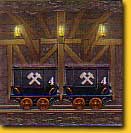 |
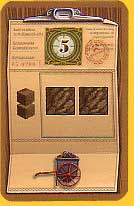 |
|
|
|
|
| x |
|
|
|
|
|
|
|
|
|
|
|
|
|
|
|
|
|
|
|
|
|
|
|
|
|
|
|
|
|
|
|
|
|
|
|
|
|
|
|
|
|
|
|
|
|
|
|
|
|
|
|
|
|
|
|
|
|
|
|
|
|
|
Glück Auf is a fairly solid game, it is not too long and has smooth gameplay. But we can wonder whether in the long run the various random elements –which lorries and orders are available, how do you aim for a majority if you don’t know your opponent’s hand- make the game too random or repetitive for the more experienced players.
© 2014 Barbara van Vugt
Glück Auf / Coal Baron, Wolfgang Kramer & Michael Kiesling, Pegasus Spiele, 2013 - 2 to 4 players, 10 years and up, 60-75 minutes
|
|
|
|
|
|
  |
|
|
|
|
|
|
|
|
|
|
|
|
|
|
|
|
|
|
|
|
|
|
|
|
|
|
|
|
|
|
|
|
|
|
|
|
|
|
|
|
|
|
|
|
|
|
|
|
|
|
|
|
|
  |
Solid piece of game craftmanship |
|
|
|
|
|
|
|
|
|
  |
A dime a dozen. Significant that the elevator is the most appealing element |
|
|
|
|
|
|
|
|
|
  |
|
|
|
|
|
|
|
|
|
|
|
|
|
|
|
|
|
|
|
|
|
|
|
|
|
|
|
|
|
|
|
|
|
|
|
|
|
|
|
|
|
|
|
|
|
|
|
|
|
|
|
|
|
  |
Get orders, mine coal, transport and score; it is the well-known three-time cracker need A to do B and get C. Gets a little boring by now |
|
|
|
|
|
|
|
|
|
| x |
|
|
|
|
|
|
|
|
|
|
|
|
|
|
|
|
|
|
| x |
|
|
|
|
|
|
|
|
|
|
|
|
|
|
|
|
|
|
|
|
|
|
|
|
|
|
|
|
|
|
|
|
|
|
|
|
|
|
|
|
|
|
|
|
|
|
|
|
|
|
|
|
|
|
|
|
|
|
|
|
|
|
 |
|
|
|
|
|
|
|
|
|
|
|
|
|
|
|
|
|
|
|
|
|
|
|
|
|
|
|
|
|
|
|
|
|
|
|
|
|
|
|
|
|
|
|
|
|
|
|
|
|
|
|
|
|
 |
|
|
|
|
|
|
|
|
|
|
|
|
|
|
|
|
|
|
|
|
|
|
|
|
|
|
|
|
|
|
|
|
|
|
|
|
|
|
|
|
|
|
|
|
|
|
|
|
|
|
|
|
|
| x |
|
|
|
|
|
|
|
|
|
|
|
|
|
|
|
|
|
|
|
|
|
|
|
|
|
|
|
|
|
|
|
|
|
|
|
|
|
|
|
|
|
|
|
|
|
|
|
|
|
|
|
|
|
|
|
|
|
|
|
|
|
|
 |
|
|
|
|
|
|
|
|
|
|
|
|
|
|
|
|
|
|
|
|
|
|
|
|
|
|
|
|
|
|
|
|
|
|
|
|
|
|
|
|
|
|
|
 |
|
|
|
|
|
|
|
|
|
|
|
|
|
|
|
|
|
|
|
|
|
|
|
|
|
|
|
|
|
|
|
|
|
|
|
|
|
|
|
|
|
|
|
|
|